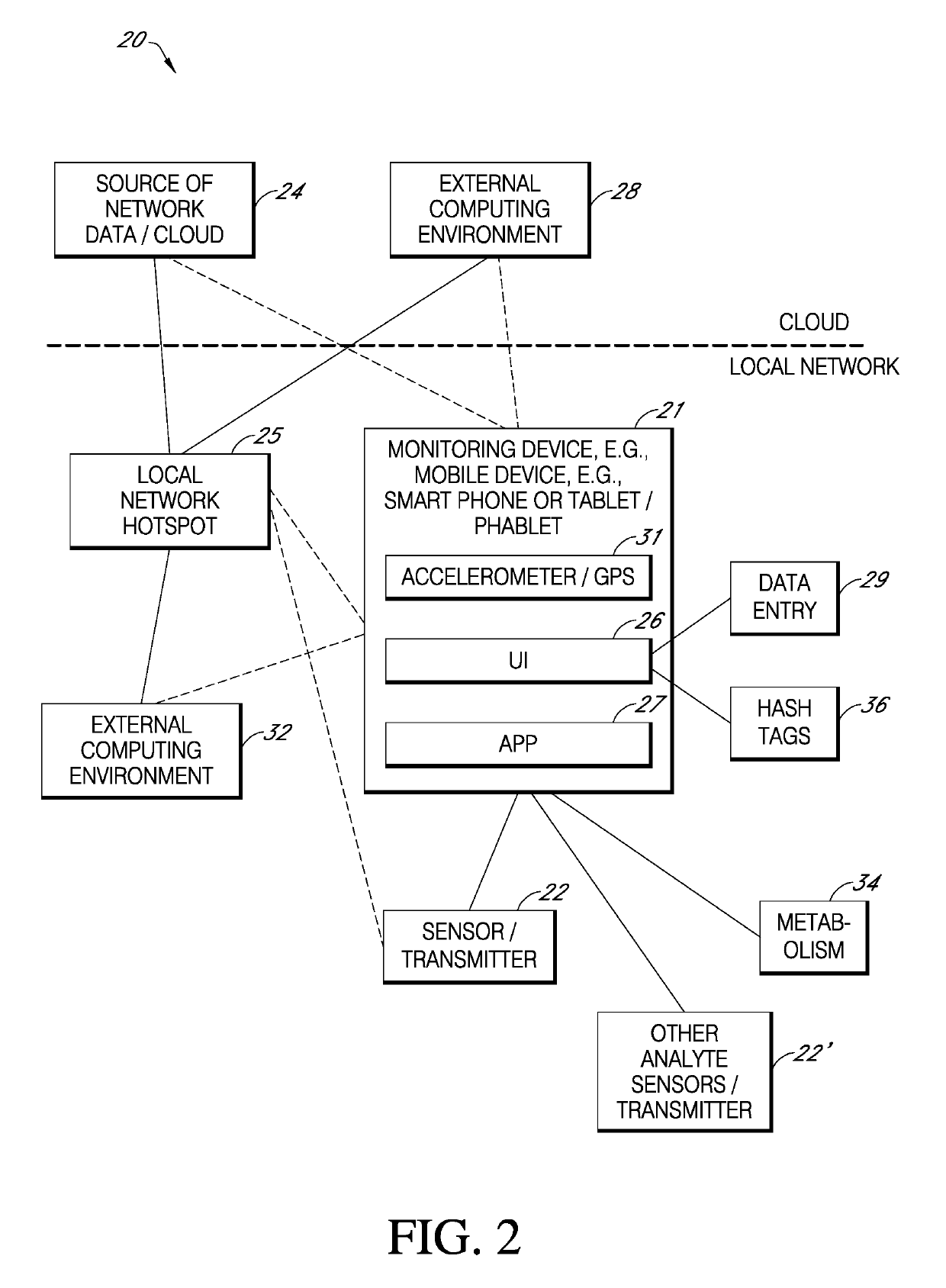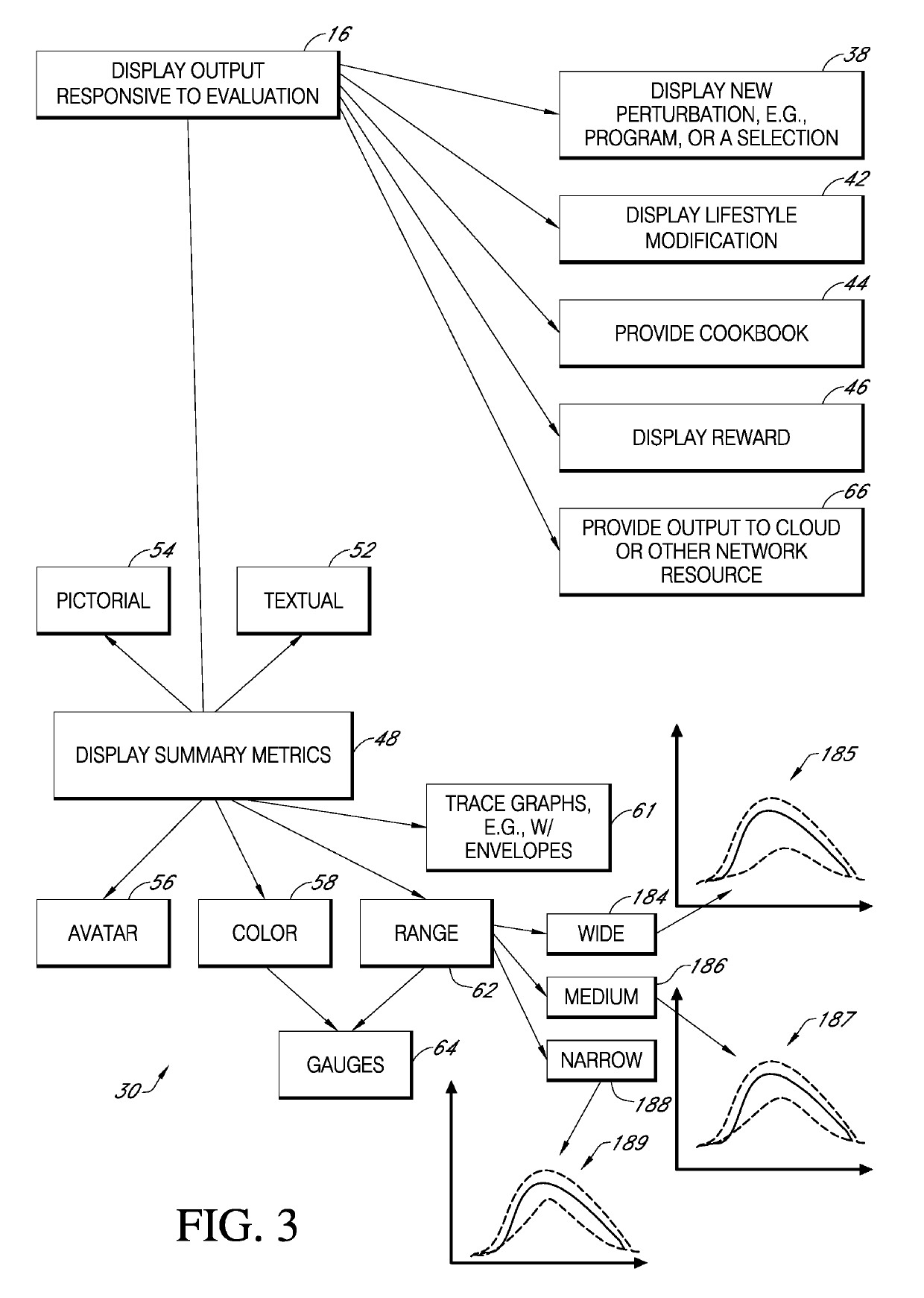System and method for educating users, including responding to patterns
a user education and pattern technology, applied in the field of continuous analyte monitoring, can solve the problems of prior systems not being able to provide programmatic learning, system optimization not being able to provide the most effective monitoring for type ii individuals, etc., to improve the detection of patterns, improve user engagement, and improve the effect of health
- Summary
- Abstract
- Description
- Claims
- Application Information
AI Technical Summary
Benefits of technology
Problems solved by technology
Method used
Image
Examples
optimization example
Exercise Optimization Example
[0392]For sports or exercise optimization, whether for diabetics or non-diabetics, exemplary inputs may include those from a lactate sensor, a movement / motion sensor such as an accelerometer or GPS device, and optionally a glucose sensor. Other data may also be entered, including weight, age, and the like. The lactate and glucose sensors may be indwelling sensors as described elsewhere, the accelerometer may be part of a mobile device such as a smart phone, smart watch, or may form part of a wearable analyte sensor, GPS may be provided from a smart phone or smart watch, and other data may be entered manually, retrieved from a profile, or via other similar sensors. If the user is a CGM user already, e.g., is a diabetic using CGM, the same CGM may be employed for exercise optimization. Otherwise, the user can be fitted with a new CGM, or may use other glucose sensing techniques. The accelerometer or motion detector could be incorporated into the body-worn ...
optimization example 1
Weight Loss Optimization Example 1
[0424]In one example, which as for other examples may be applied to non-diabetics as well as diabetics, a user may be instructed how to optimize fat reduction through exercise. In this example, weight loss optimization is performed using lactate and accelerometer measurements.
[0425]In more detail, many people exercise to lose weight and specifically to lose fat; however, most want to achieve a maximal fat loss with the least amount of effort. A particular use case is a user who has only a half hour to exercise, and who desires to optimize that exercise. Optimizing the type of exercise, the intensity, and the duration, can burn fat more rapidly and more efficiently.
[0426]As noted above with respect to exercise optimization, exercise builds up lactate, and at some point as the user increases the intensity of exertion, the body transitions from burning fat to burning carbohydrates. For weight loss optimization, it is thus desired to exercise at a level...
optimization example 2
Weight Loss Optimization Example 2
[0435]In another example, again applicable to non-diabetics and diabetics alike, a user may be instructed how to optimize fat reduction through measurement of glycerol and / or ketones or similar analytes. Glycerol, like triglycerides, is a byproduct of metabolism such as fat digestion. In this example, weight loss optimization is performed using analyte sensors without necessarily measuring user activity.
[0436]In more detail, measuring rates of fat burning can help people maintain or optimize their diet. This example uses measurement of glycerol and / or ketones, which are byproducts of fat metabolism, without necessarily requiring exercise. Thus, a user on a low carbohydrate diet could use the system and method of this example to monitor and measure the efficacy of their approach. The fat metabolism itself may be caused by either exercise or diet.
[0437]In particular, inputs to this system include data from measurements of glycerol and ketones. Appropr...
PUM
 Login to View More
Login to View More Abstract
Description
Claims
Application Information
 Login to View More
Login to View More - R&D
- Intellectual Property
- Life Sciences
- Materials
- Tech Scout
- Unparalleled Data Quality
- Higher Quality Content
- 60% Fewer Hallucinations
Browse by: Latest US Patents, China's latest patents, Technical Efficacy Thesaurus, Application Domain, Technology Topic, Popular Technical Reports.
© 2025 PatSnap. All rights reserved.Legal|Privacy policy|Modern Slavery Act Transparency Statement|Sitemap|About US| Contact US: help@patsnap.com



